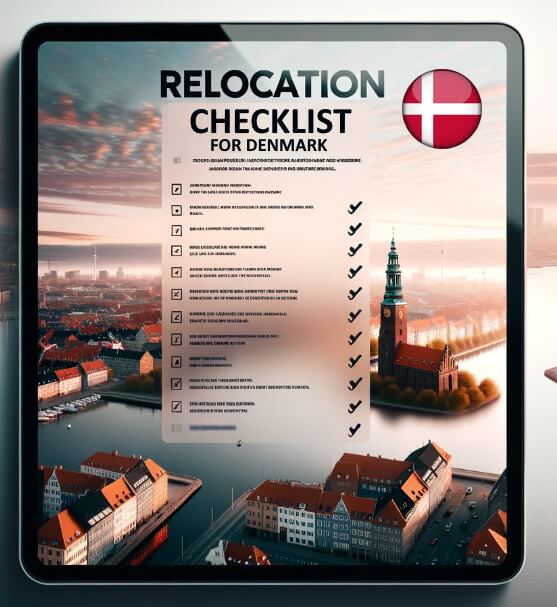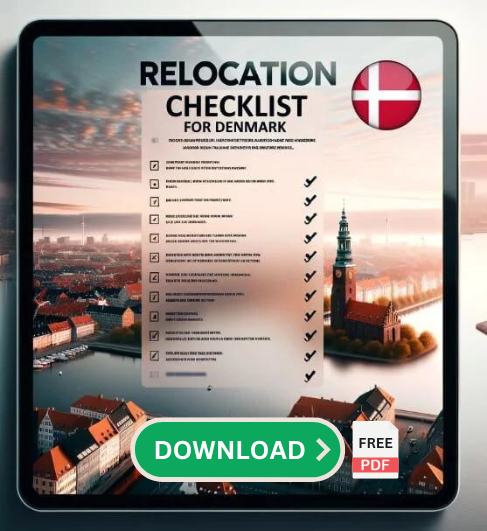Denmark's maternity leave policy, or "barsel" as it's locally known, is renowned for being one of the most generous in the world. It's a system designed to put families first, allowing parents to spend valuable time bonding with their newborns without the worry of losing their income or jobs.
While it's a fantastic support system, the intricacies and regulations can feel complex, particularly for those not well-versed in the Danish language or labor laws.
This article aims to unpack these complexities and provide a comprehensive, empathetic guide to help you navigate your maternity leave in Denmark.
Key Takeaways
- Denmark has a generous maternity leave policy, ensuring financial support and job security for new parents.
- Both mothers and fathers/co-parents are entitled to leave, promoting shared parenting.
- Healthcare services and postnatal care in Denmark are comprehensive and readily available.
- Navigating life during maternity leave involves bonding with the baby, self-care, and planning for the future.
- Transitioning back into the workforce requires open communication with employers and exploring childcare options.
Detailed Explanation of Danish Maternity Leave Laws
When embarking on the journey of parenthood, understanding the maternity leave laws in your new home country becomes paramount. In Denmark, these laws are not only generous but also designed with the welfare of both the mother and the child in mind. However, they can feel a bit intricate, especially if you're new to the country or the Danish language. But worry not, we're here to demystify these for you in a gentle and understanding manner.
The Duration and Division of Maternity, Paternity, and Parental Leave
Denmark's maternity leave system, known as "barsel", is divided into three main parts: maternity leave, paternity leave, and parental leave. The entire period of leave can extend up to 52 weeks, with payments for most of this duration.
- Maternity Leave: Mothers are entitled to a total of 4 weeks of leave before the expected birth date and then 14 weeks afterward. This post-birth period is exclusively reserved for the mother, allowing you uninterrupted time to recover and bond with your newborn.
- Paternity Leave: Fathers or co-mothers also have an exclusive 2-week leave period within the first 14 weeks after childbirth. This is a special time for them to establish their bond with the newborn.
- Parental Leave: Following the maternity and paternity leave periods, there are 32 additional weeks of parental leave that can be split between both parents as they see fit. This allows you the flexibility to decide who stays home with the child and when, depending on your family's unique needs and circumstances.

Understanding the "Barsel" Concept
"Barsel" is the Danish term used to describe the period surrounding childbirth where parents are entitled to take leave from work. Understanding this concept is essential as it forms the foundation of Denmark's family-friendly policies. It is a testament to Denmark's commitment to promoting work-life balance, gender equality, and the well-being of families.

Remember, every family is unique, and how you decide to divide your "barsel" might be different from others. What matters is finding what works best for you and your family.
In the following sections, we'll explore how maternity pay works, eligibility criteria, and the application process for maternity leave. Take a deep breath, you're doing great so far! This may seem like a lot, but understanding these laws will empower you to make the best decisions for your growing family.
The beautiful journey of parenthood awaits, and we're here to help you navigate it in Denmark, one step at a time.
Financial Aspects of Maternity Leave
Finances can often be a source of worry for new parents, especially when one considers the potential loss of income during maternity leave. In Denmark, however, the system is built to offer substantial financial support during this crucial period. Let's break it down in a simple, supportive, and empathetic manner so you can plan your leave with a sense of security and ease.
Understanding How Maternity Pay Works
During your maternity leave in Denmark, you will receive maternity benefits, known as "barselsdagpenge". These benefits are paid by a state body called Udbetaling Danmark. The amount you receive will depend on your employment situation before you go on leave. If you have been employed, your benefits will be calculated based on your salary. If you have been self-employed, it will depend on the income from your business.
In most cases, the benefits are capped at a maximum rate per week. However, some employers offer their employees full pay during maternity leave, which is a top-up from the state maternity benefits. This is typically part of your employment contract, so it's important to check this detail with your employer.
Role of Employer and Udbetaling Danmark in Maternity Pay
As mentioned, your maternity benefits will be paid by Udbetaling Danmark. They will need information about your income, which is usually provided by your employer through an eIncome system. This is a process you don't need to worry about, as it will be handled by your employer and Udbetaling Danmark.
If your employer provides full salary during maternity leave, they will pay the difference between the state maternity benefits and your regular salary. This is known as "employer-paid salary during maternity leave" or "løn under barsel".
Financial Planning for Maternity Leave
Planning your finances during maternity leave is essential. Ensure you understand the length of your leave and how much you will receive each month in benefits or salary. This will help you budget accordingly and set realistic expectations for this period. It's also worth considering any changes to your living expenses, such as childcare and baby essentials.
It's completely natural to feel a bit overwhelmed when trying to understand the financial aspects of maternity leave. Take one step at a time, and remember that you're not alone. Numerous resources are available to help you navigate this, and we're also here to support you along the way.
Eligibility Criteria for Maternity Leave in Denmark
Understanding who qualifies for maternity leave benefits in Denmark is key to planning your family's future. It's important to note that the Danish system is designed to be inclusive and supportive. Let's gently unpack the eligibility criteria, bearing in mind the variety of situations and family structures that expats in Denmark may have.
Determinants for Qualification
To qualify for maternity benefits or "barselsdagpenge", there are a few basic criteria:
- Employment: You need to have been employed for at least 160 hours in the last four complete months before your leave starts and for at least 40 hours in each of these months. If you are self-employed, you must have been running your business for at least 6 months before the birth of your child.
- Residency: You should be living in Denmark or be a cross-border worker (i.e., you live in one EU country and work in another).
- Membership in an Unemployment Insurance Fund: If you are not employed, being a member of an unemployment insurance fund for at least one year before the birth of your child can also make you eligible for maternity benefits.
Special Situations: Adoption, Multiple Births, Non-working Parents, etc.
Denmark’s maternity leave laws also consider special situations:
- Adoption: If you're adopting, you're entitled to leave from the time the child is placed with you. The duration of the leave is similar to that for biological parents.
- Multiple Births: In case of multiple births, the total leave period can be extended.
- Non-working Parents: Non-working parents, including students, might be entitled to benefits if they've been a member of an unemployment insurance fund for at least one year prior to the birth.
- Premature Birth: If your baby is born prematurely, additional leave might be granted.
These guidelines aim to provide a general understanding of the eligibility criteria for maternity leave benefits in Denmark. Each situation can have its nuances, so for detailed and personalized advice, you might want to consult with Udbetaling Danmark or a labor union if you're a member of one.
The Process of Applying for Maternity Leave
Applying for maternity leave might seem daunting at first, especially when you're adjusting to a new country's rules and systems. But rest assured, we're here to provide a clear, supportive, and empathetic guide to this process. Let's take this one step at a time.
When and How to Notify Your Employer
First and foremost, you need to inform your employer about your pregnancy and the expected due date. Danish law requires you to notify your employer at least three months before the expected birth date. Although it might seem early, this allows both you and your employer ample time to plan for your upcoming leave.
It's important to note that your employer cannot dismiss you due to pregnancy or maternity leave. This is protected by Danish law. While it might feel stressful to have this conversation, know that your rights are safeguarded.
How to Apply for Maternity Benefits through Udbetaling Danmark
Applying for maternity benefits in Denmark is done online through the 'Self-service' portal, or "Selvbetjening", on the website of Udbetaling Danmark.
You should apply no earlier than one month before your leave begins and no later than eight weeks after your leave has started. If your baby arrives earlier than expected, you should apply within eight weeks after the birth.
Here's a simplified step-by-step process:
- Log in to the 'Self-service' portal using your NemID, a secure login provided to all residents in Denmark.
- Click on 'Children and maternity benefits' or "Børn og barsel".
- Click on 'Apply for maternity benefits' or "Søg barselsdagpenge".
- Follow the prompts to fill in your information.
Keep in mind that the portal will be in Danish, but you can use a web translation tool to guide you through the process. Alternatively, you can seek help from a Danish-speaking friend, colleague, or support resource.
Stepping into the world of parenthood is a transformative journey filled with joy, challenges, and everything in between. As you embark on your maternity leave in Denmark, it's essential to know what to expect and how best to navigate this period. Remember, this is a special time for you and your family, and our aim is to ensure you experience it with as much ease and support as possible.
Bonding with Your Baby and Taking Care of Your Health
The first few weeks and months with your new baby are a precious time of bonding. This is a time to get to know your baby, understand their rhythms and routines, and, most importantly, take care of yourself. Your health and well-being, both physical and emotional, are crucial during this period.
Make sure you attend all necessary postnatal check-ups for yourself and your baby. Danish healthcare services provide thorough postnatal care, so ensure you utilize these resources.
Engaging with Parenting Groups and Networks
Denmark has a thriving community of parents and parenting groups, many of which are welcoming to expats. These can be wonderful resources for support, companionship, and advice during your maternity leave. From sharing experiences to discussing parenting practices, joining a group can provide a sense of community and shared understanding.
Planning for the End of Maternity Leave
While it might seem far off when you first embark on your maternity leave, planning for the end of your leave period is important. This includes considering childcare options such as nurseries or childminders, as well as discussing with your employer about your return to work.
Remember, transitioning back to work after maternity leave is a big step, and it's completely normal to have mixed emotions about it. Your employer should provide a supportive environment to ease this transition.
Enjoying This Special Time
Finally, and most importantly, remember to enjoy this unique and special time with your new baby. These moments are precious and will provide memories that last a lifetime. Make the most of your maternity leave, knowing that you are well-prepared and supported.
Transitioning Back into the Workforce
Returning to work after maternity leave is a significant transition, filled with a mix of emotions. You might be eager to reconnect with your professional self, or you might feel anxious about leaving your baby. Both sentiments and everything in between are completely normal. Here, we aim to provide you with a supportive and empathetic guide to ease this transition and help you balance your professional life with your new role as a parent.
Communicating with Your Employer
Communication is key when planning your return to work. Keep your employer informed about your intended return date and any requests or needs you might have, such as flexible working hours or the possibility of working from home. Danish laws and work culture generally support a healthy work-life balance, and your employer should be understanding of your new needs as a parent.
Considering Childcare Options
In Denmark, there are several high-quality childcare options for children from six months onwards. This includes public daycare centers, private nurseries, or childminders. Explore all your options, visit a few locations, and choose the one that best suits your family's needs and gives you peace of mind while at work.
Easing into Your Work Routine
It might be beneficial to start with a part-time or flexible schedule if possible. This can help you gradually adjust to the change while ensuring you have enough time for your baby. You may also want to consider doing a few practice runs of your new routine before your official return to work.
Prioritizing Self-care
Returning to work and managing childcare can be a challenging period. Remember to take care of yourself. Try to maintain a balanced diet, get enough sleep, and carve out a little time for relaxation and activities you enjoy. Self-care is not a luxury, but a necessity for you to be your best both at work and as a parent.
Joining a Support Network
Joining a support group with other parents who are experiencing the same transition can be incredibly helpful. Sharing experiences and coping strategies can provide reassurance and practical advice.
Related: Learn about the primary school system in Denmark
Additional Resources
Udbetaling Danmark
The organization responsible for administering social benefits in Denmark. They can provide detailed information about your specific maternity benefit situation and can assist you in the application process. Learn more here.
Your Employer’s HR Department
Your human resources department can provide you with specific information about your company's maternity leave policy, additional benefits you might be entitled to, and help you plan your return to work.
Local Municipality
Your local municipality or 'kommune' offers various services for families with young children, including health visitor programs, parenting courses, and information about local parent groups.
FAQs
What if I lose my job during maternity leave?
You cannot be dismissed solely because you are pregnant or on maternity leave. This is protected by Danish law. However, in the unfortunate event of job loss due to other reasons, like company restructuring, you are still entitled to receive maternity benefits if you meet the conditions set by Udbetaling Danmark.
Can I extend my maternity leave beyond the standard period?
The duration of your maternity leave largely depends on your agreement with your employer. Some employers may offer more flexible leave options. Remember to discuss this with your employer and know your rights.
What happens if my baby is born earlier than expected?
If your baby is born earlier than expected, your maternity leave begins the day after the birth. You should notify your employer as soon as possible and adjust your leave dates accordingly with Udbetaling Danmark.



![Primary School Education in Denmark ([year] Guide) Daycare in Denmark](https://denmarkexpat.com/wp-content/uploads/2023/09/Daycare-in-Denmark-150x150.jpg)
![Divorce in Denmark: Undertanding the process [year] divorce in denmark](https://denmarkexpat.com/wp-content/uploads/2024/05/divorce-in-denmark-150x150.jpg)
